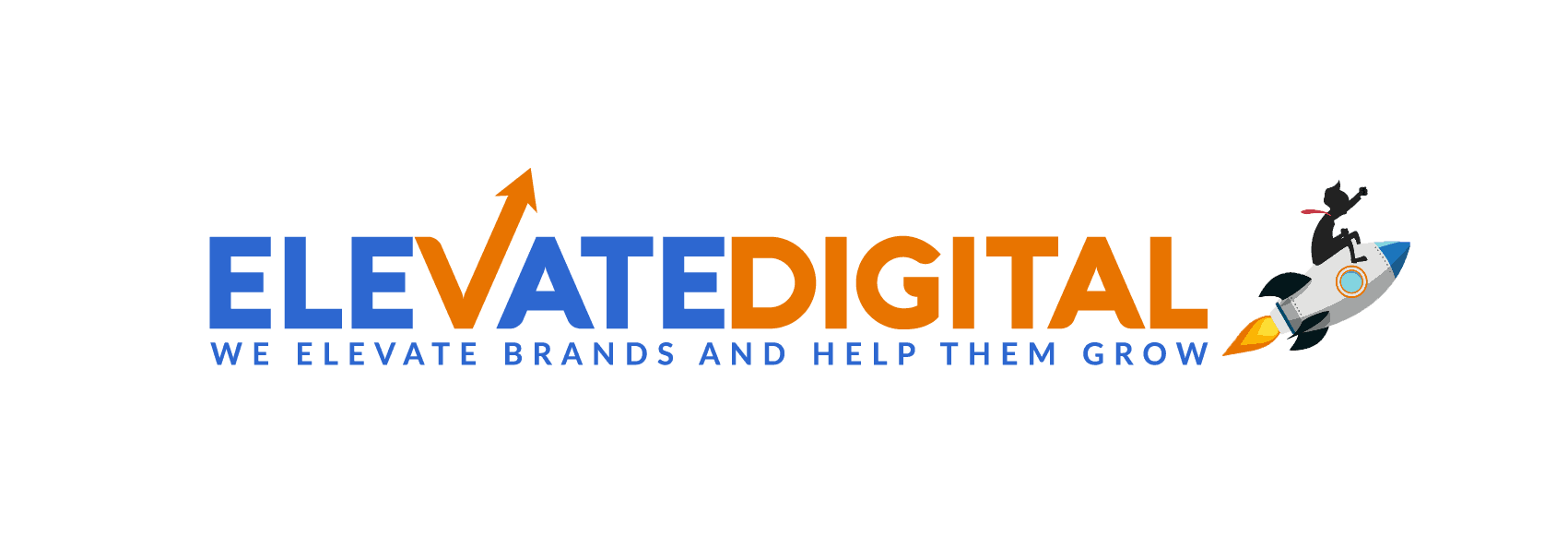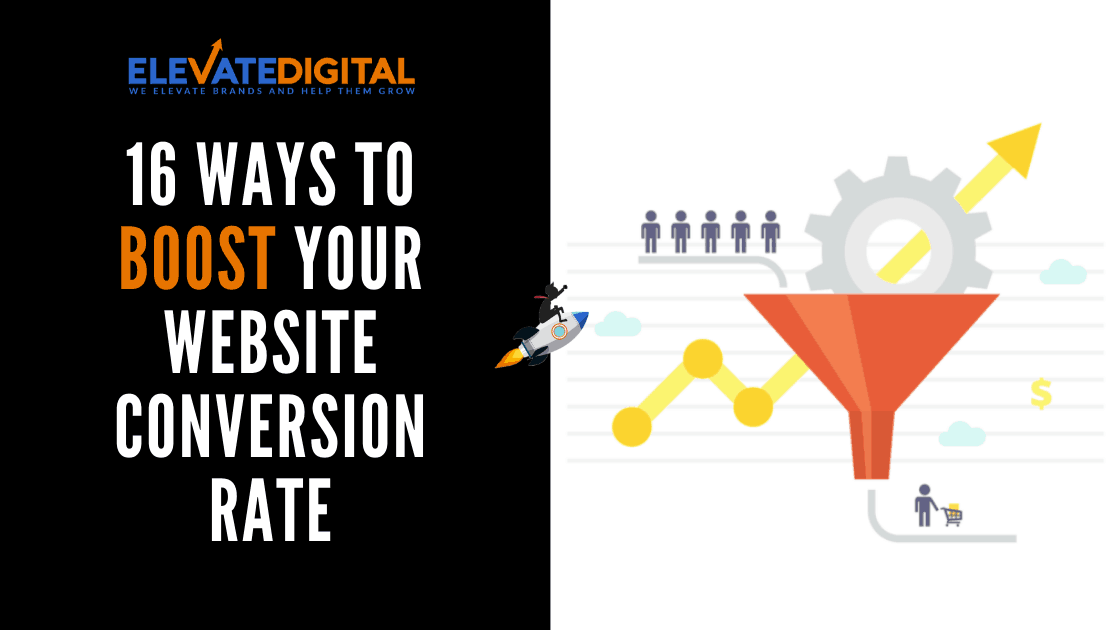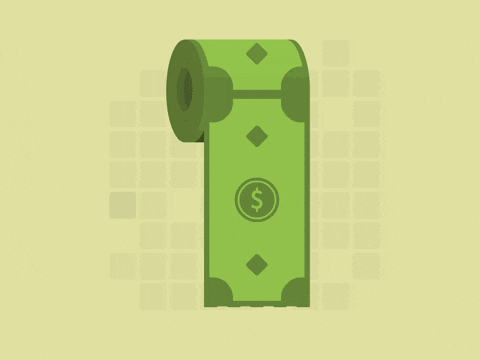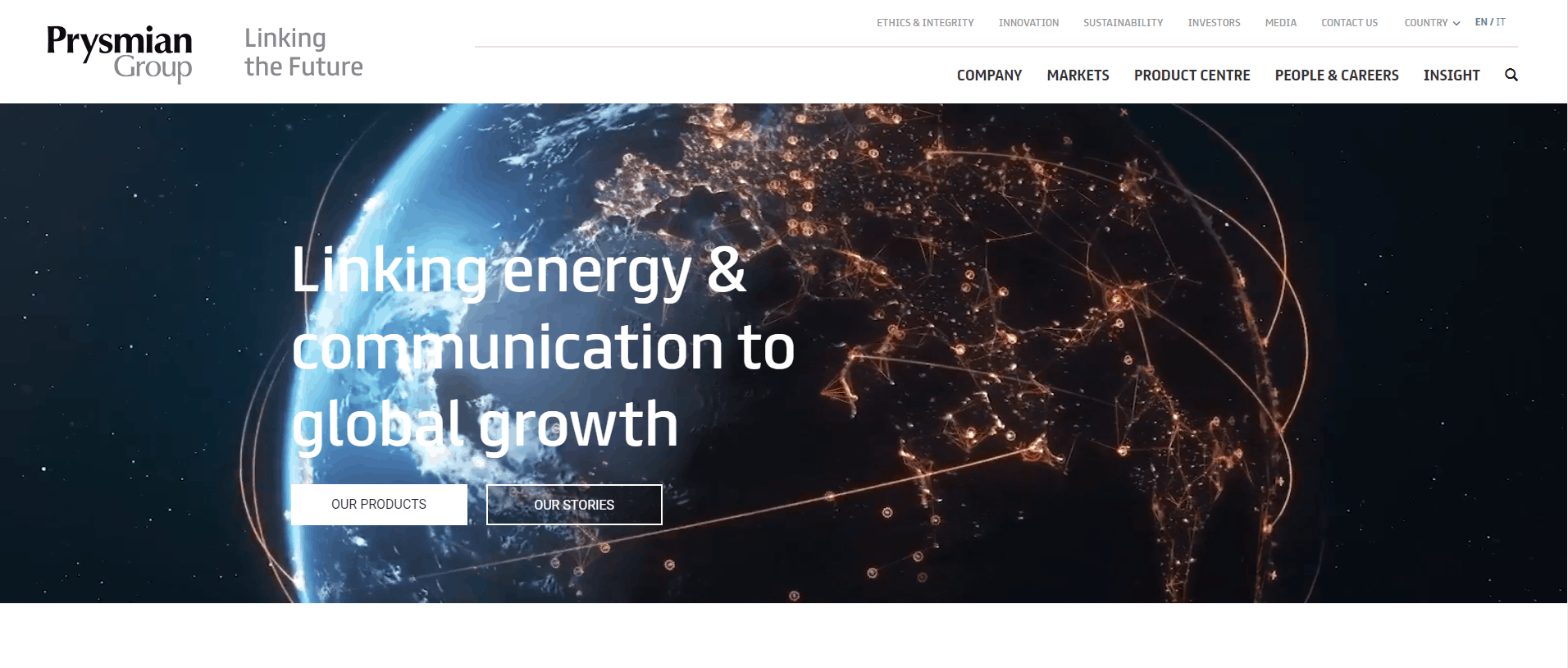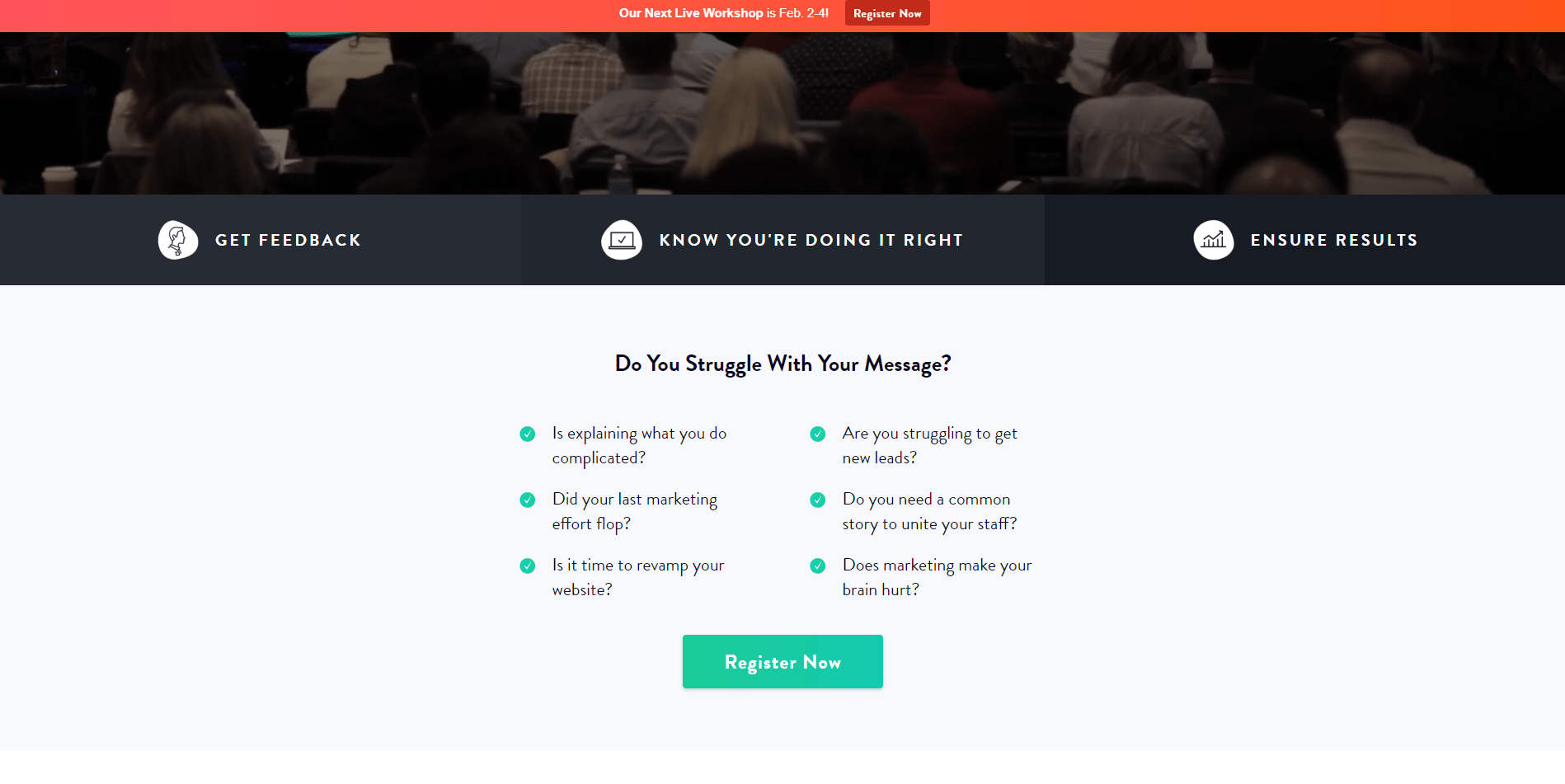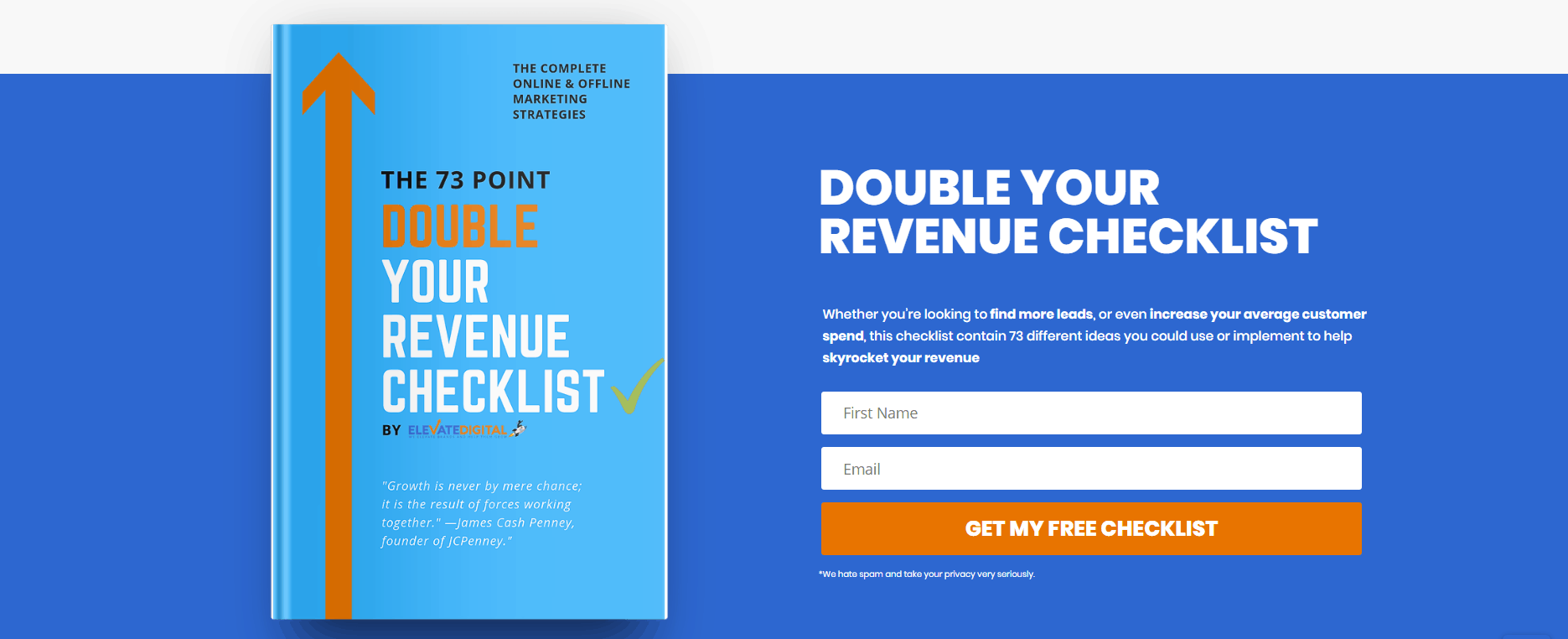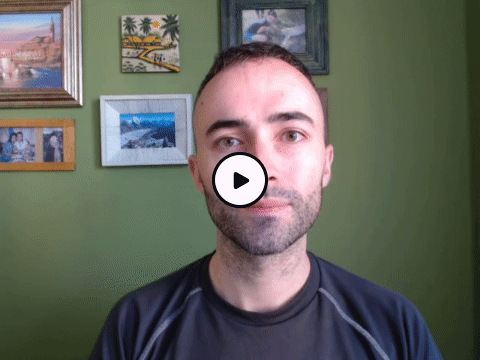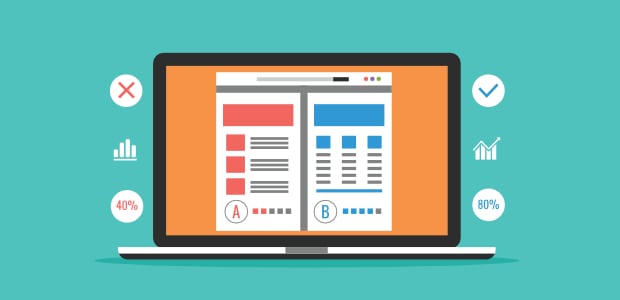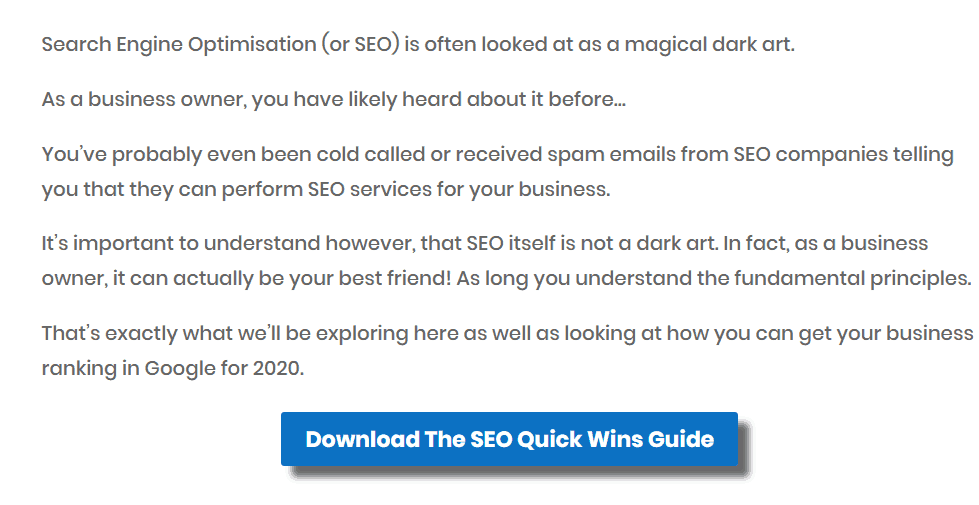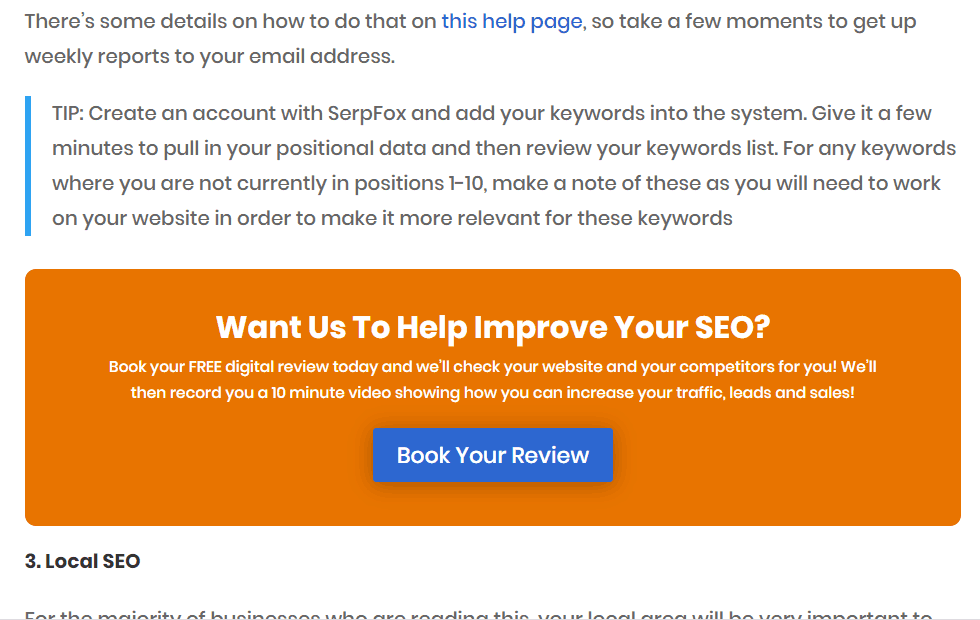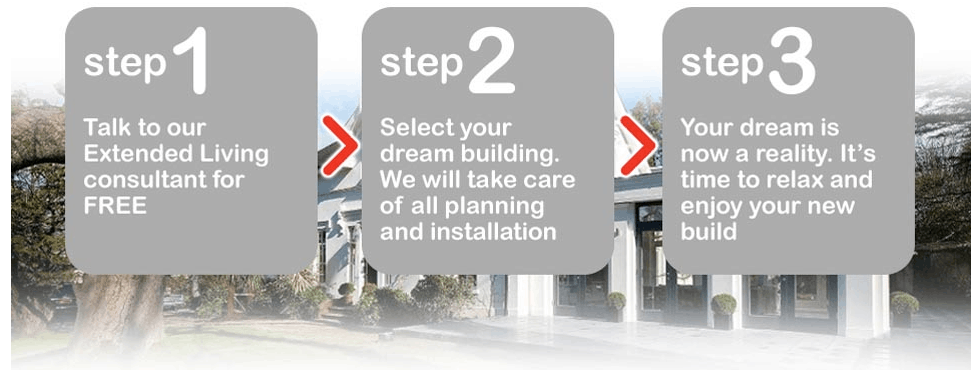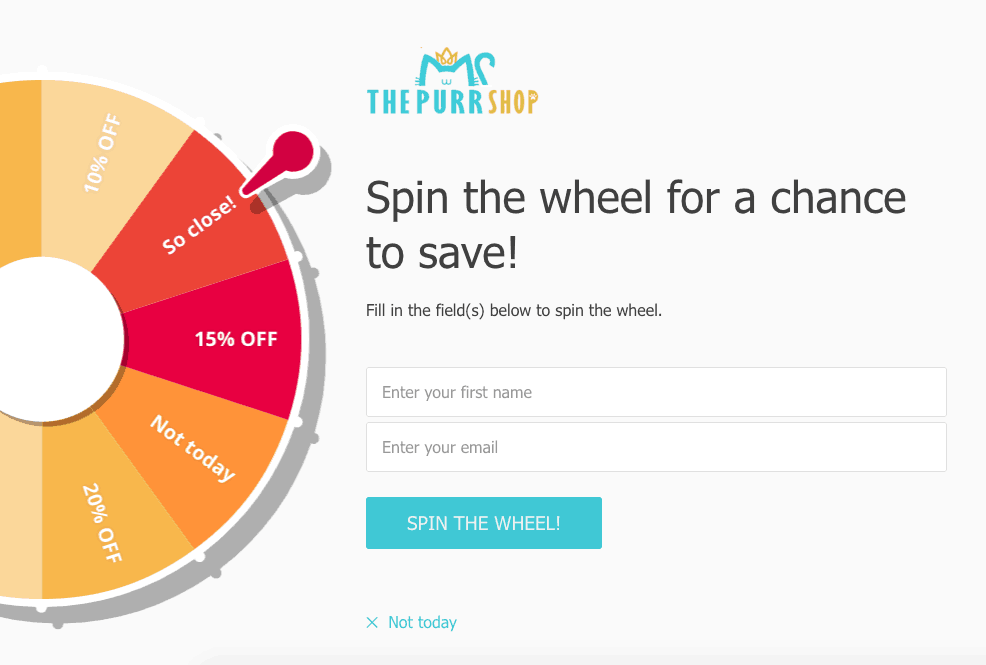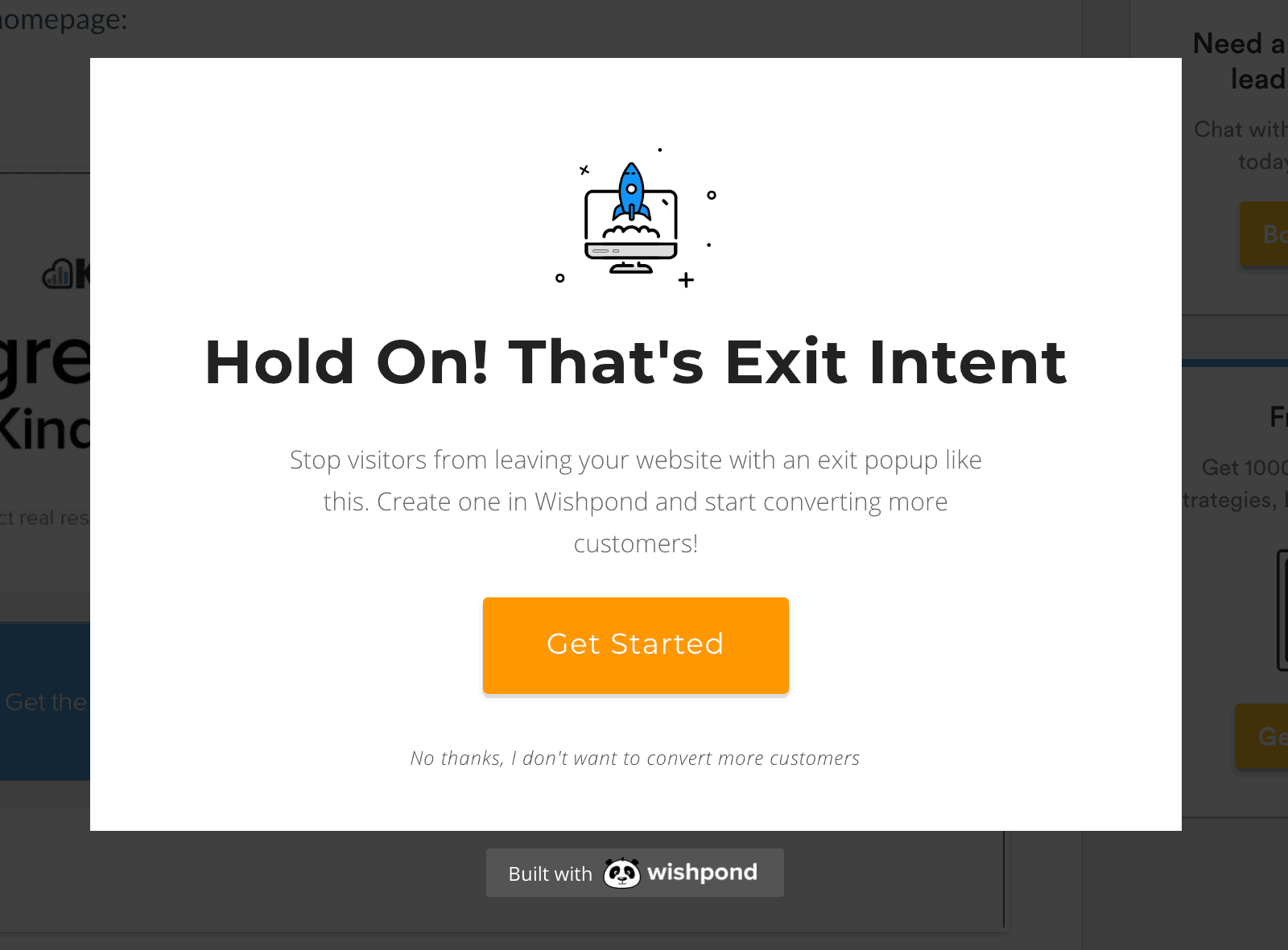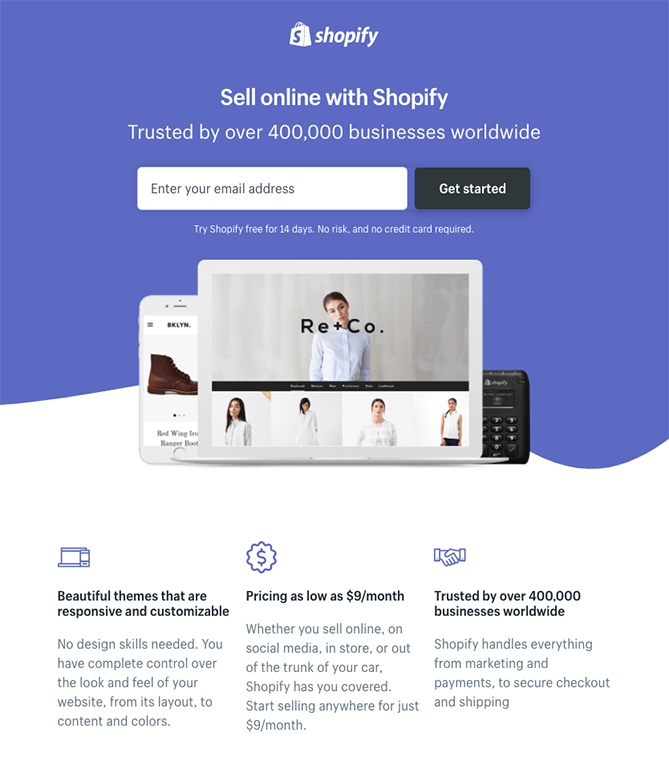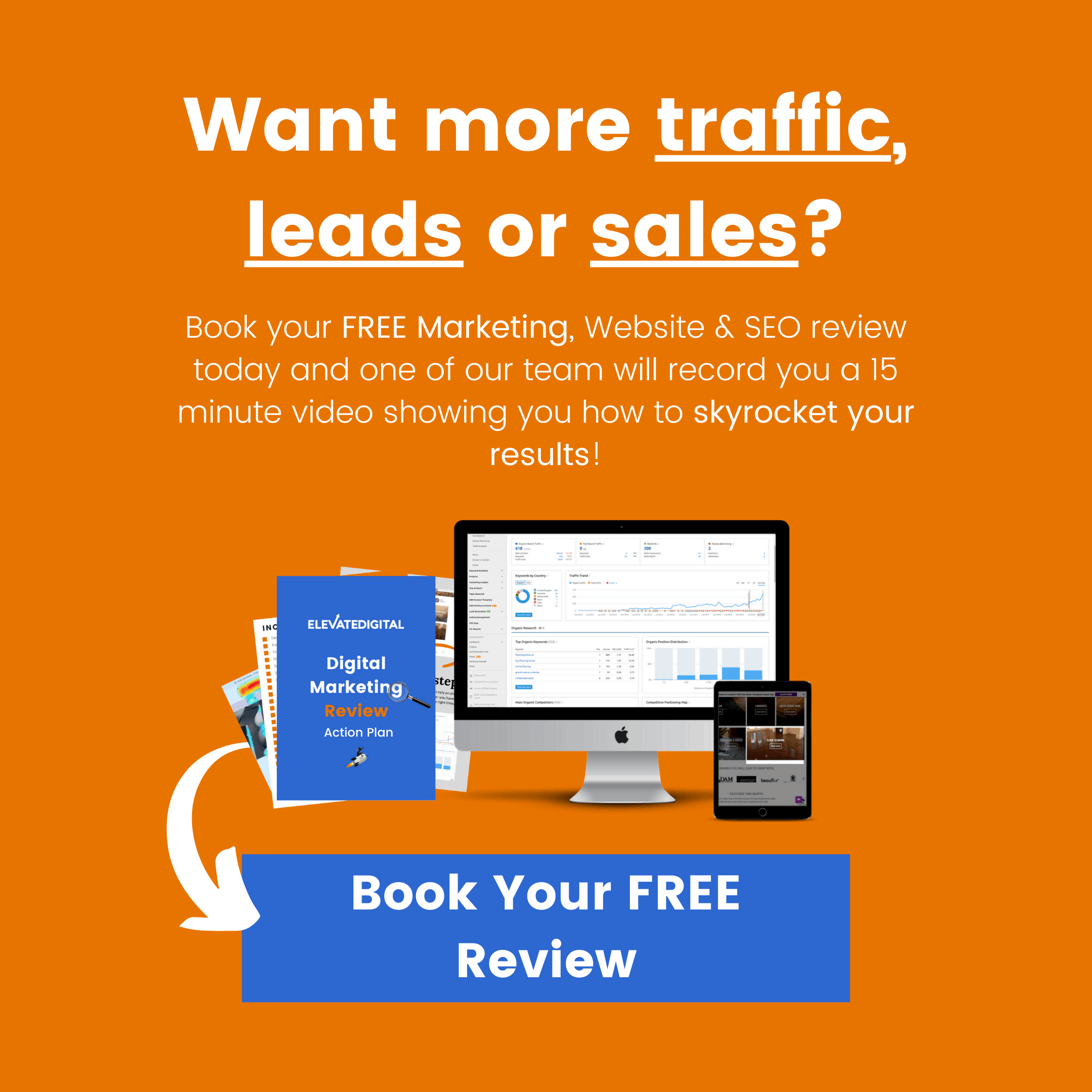Learning how to increase your website conversion rate is BY FAR, one of the quickest ways to skyrocket your sales!
And the best part?
It can often be at least marginally improved with very little time or effort.
In fact, we’ve seen instances where conversion rates have literally doubled over-night, just from making a few small changes!
But the irony is, most people don’t even realise they have a conversion problem – think they have a traffic problem…
As a result, they’ll end up spending thousands on paid advertising or SEO.
The issue is, if your website isn’t optimised for conversions, you’re effectively throwing money down the toilet!
Why Does Website Conversion Rate Matter?
Let’s look at an example here:
Imagine you’re currently running an online advertising campaign with a budget of £10k per month. If you’re currently getting 10,000 visitors to your site a month from that campaign and your website converts at 0.5% (not un-common for a lot of websites!) you’ll be getting approximately 50 leads/sales per month.
If you want to work out your own websites conversion rate; be sure to check out our handy conversion rate calculator.
Now let’s say with a few changes here and there, we were able to bump that up by a conservative 1% to a 1.5% conversion rate.
You’d now be getting triple the leads or sales for the SAME spend!
Pretty crazy right!?
What Is An Average Website Conversion Rate?
There have been numerous studies done on website conversion rate in attempt to figure out an average…
However, this can be a tricky area to measure as it can wildly vary depending on both the industry of the business and the source of traffic. As such, you’ll find hugely fluctuating reports on the average website conversion rate.
For example, organic traffic from Google will typically convert much higher than that of a PPC campaign.
We’ve been fortunate enough to review and audit well over 100 websites in a huge variety of industries now and the truth is; most businesses are converting at under 2% which means 98% of visitors are leaving without taking action!
Some of the best websites or landing pages with highly targeted traffic can convert up to 15% of all visitors (sometimes more).
So by now you’re probably wondering how to boost and increase your own website conversion rate… well, let’s get straight into it!
Here are 16 PROVEN ways you can start skyrocketing your conversions today.
Tip 1: Have a compelling headline immediately visible
This is a HUGE missed opportunity on a lot of websites.
At the very top of your website you should have a headline which clearly tells people what you can do for them.
For example, if you’re a personal trainer. you might say something like:
“I will help you lose weight, get healthy and FEEL incredible”.
Don’t just use a fluffy vague headline, really tell people what you can do for them, this will tell your visitor that they are in the right place.
Time and time again we see people who had their website built by a designer who
If they don’t see what they want straight away, they’ll likely click off your site and go elsewhere.
Check out this great example below by Whitehouse Management Group:
It tells you what they offer, how they do it, and has a clear call to action at the bottom.
Here’s an example of the opposite:
Talk about ambiguous!
It’s nice coming up with a cool mission and vision statement that you understand as a company…
But for a potential customer who lands on this website for the first time; it’s not clear at all what they’re actually offering here.
Other than something to do with energy and communication…
Remember, your ego has no place on your website.
The focus should ALWAYS be on the customer and telling them what they need to know.
Tip 2: Speak to a particular audience
Consider a niche, especially if you’re a small business.
This can really help you to deliver a highly relevant message that will stand to separate you from the competition.
If you serve multiple different groups or personas, a good method can be to package services or products for those specific audiences or even have dedicated pages on your site.
If you haven’t already defined your avatar. Be sure to check out our article on how to create a customer avatar here.
Tip 3: HOOK people early on
It’s critical to ensure your messaging and content really grabs the attention of your audience.
You can do this by giving them a compelling offer/proposition very early on; without them having to do much scrolling.
Really dig into those pain points and then clearly identify the transformation your product or service takes people through.
Here’s a great example from Donald Miller’s, Storybrand:
You’ll notice they’ve really dived into the “before” state of what their customer may currently be experiencing and spoken to that.
Showing understanding is a powerful way of grabbing people’s attention and boosting your website conversions.
Tip 4: Offer a lead magnet
The fact is, the majority of people that visit your website, won’t be ready to buy “right now”
And even if they were, they don’t know like and trust you yet.
Offering some form of value for free up front is a great way of building that trust and turning visitor to a lead.
Ultimately this will allow you to convert them into buyers over time through an automated marketing sequence.

Here’s an example from our own website here:
We know that most of our visitors are looking for ways to increase their sales and revenues.
However, they’ve often been stung by marketing agencies in the past.
As a result, this is a way for us to demonstrate value upfront and show them what we can do.
This won’t only increase your overall conversion rate but it will make it much easier to turn leads into sales. Or, in the case of an e-commerce store, it can help to create brand loyalty and trust; leading to repeat buyers.
If you want to know more about this, check out our in-depth article on how to create a lead magnet.
Tip 5: Utilise video to build trust and engagement
Video is another extremely effective way of building trust with your visitors.
In fact, a study by Aberdeen Group, showed that marketers who incorporated video into their campaigns experienced 34% higher conversion rates.
Here’s a few ideas of different types of video you could include on your website:
- Product explainers
- Meet the team
- How to videos
- Founder story video
- Client testimonials (this is a BIG one)
- Footage of your service or product in action
Tip 5: Have prominent and clear call-to-action buttons
The call-to-action is where the magic happens.
Whether this be a “buy now” button or a simple “contact us”, think about some ways you could really make this stand out.
When you can tap into the desired end result your customer has in mind, this can be incredibly effective.
For example, if I was a Estate Agent, offering quick and effortless home sales; I might have a call to action button like this:

It’s also important here to keep the call-to-action as consistent as possible.
Ideally aim for 1-2 different options at most. This might be your primary call of action and then an additional one for a lead magnet.
Remember, the more options you give people, the less likely they are to take any of them.
Tip 6: Test EVERYTHING
This bring us nicely onto tip 6 – testing!
Whilst there are definitely some core principles that can help increase conversions; there are also a LOT of variables at play.
What works for one business/industry/audience, won’t always work for others, so be sure to test everything.
This can be done through a method called A/B testing. In a nutshell, this will alternate which variation of a page or element visitors will see and then give you a winner!
Testing can be done with a number of elements on the page such as:
- Text/Copywriting
- Images
- Videos
- Call to action buttons
- Colours
- Popups
Also, make sure not to do everything at once as it can be difficult to tell which change has made the difference! Try a systematic approach by testing one element at a time.
We’ll have a more in-depth article on testing and tracking coming soon so watch this space!
Tip 7: Use your blogs to drive conversions!
Blogging is a fantastic way of driving highly-targeted traffic to your website, yet most blogs are completely underutilised.
Think about the intentions of the visitor who may be reading a particular blog post.
Once you’ve done this, create a download or lead magnet that will progress them in that area.
This might even just be a call-to-action button for people to contact you. But don’t rely on just a small text link, as people will often overlook this!
Here’s a few examples from our recent article on SEO in 2020:
As this is a pretty long article at over 3,000 words, we’ve offered people a Quick Wins guide right at the start, in case they’re short on time.
We then include the offer of a Free Personalised Review & Action Plan as people get further into the article and start to see how SEO could help them.
Tip 8: Sell the result (not the product or service)
There’s an old analogy “People don’t want a drill, they want the hole in the wall”.
But more specifically, they want to show off the picture they’re going to hang when it’s all done!
It’s easy to get caught up and excited in all the features of your product or service. Especially if you’re passionate about what you do.
But don’t let this get in the way of connecting to what your customers really wants!
Think about how this might look for your business…
Tip 9: Break it down into easy steps
Whether you run an online store or you sell a service, breaking the process down into simple steps can work wonders for your conversion rates.
People often have doubt or fear when they come into contact with a business for the first time, so you need to do whatever you can to mitigate that.
Here’s a great example from a property development company called Extended Living:
This works for a number of reasons:
- It shows people a clear path to their desired outcome
- It allows people to visualise what it would be like to work with you
- It helps to remove doubt/uncertainty around engaging with your business
- It speak to both the logical and emotional parts of the mind
Try not to have more than 4 steps at MOST though as this can actually have the opposite effect by overwhelming people.
Tip 11: Don’t put flashy design over user-experience
This is one of the biggest mistakes we made when we first launched our website.
We wanted to look “cool” and like we knew our stuff, but lost all consideration for the people we actually wanted to serve!
Don’t do this…
Design may be an important element of your brand or business.
But, just be sure it doesn’t come at the expense of the user experience.
We’ve seen a number of fancy looking website with flashy designs that we couldn’t even find the contact button for!
To the company, it probably seems really cool hiding buttons within intricate and complex menus.
But always ask yourself, “will my customer get this?”.
It can also be a good idea to have your website or landing page tested externally outside of your company; ideally by your customer avatar.
Tip 12: Make sure your site is mobile optimised!
It’s estimated that over 50% of all search traffic comes from a mobile device.
If your website isn’t optimised for mobile; meaning users have to scroll around and zoom in and out…
You’re in trouble!
Especially since Google announced a few years back they will be indexing website for mobile-first.
This means if your site isn’t fully responsive on mobile devices, it’s unlikely people will even see it in
the search engines anymore.
Here’s an example of one of our clients websites which has been optimised for mobile.
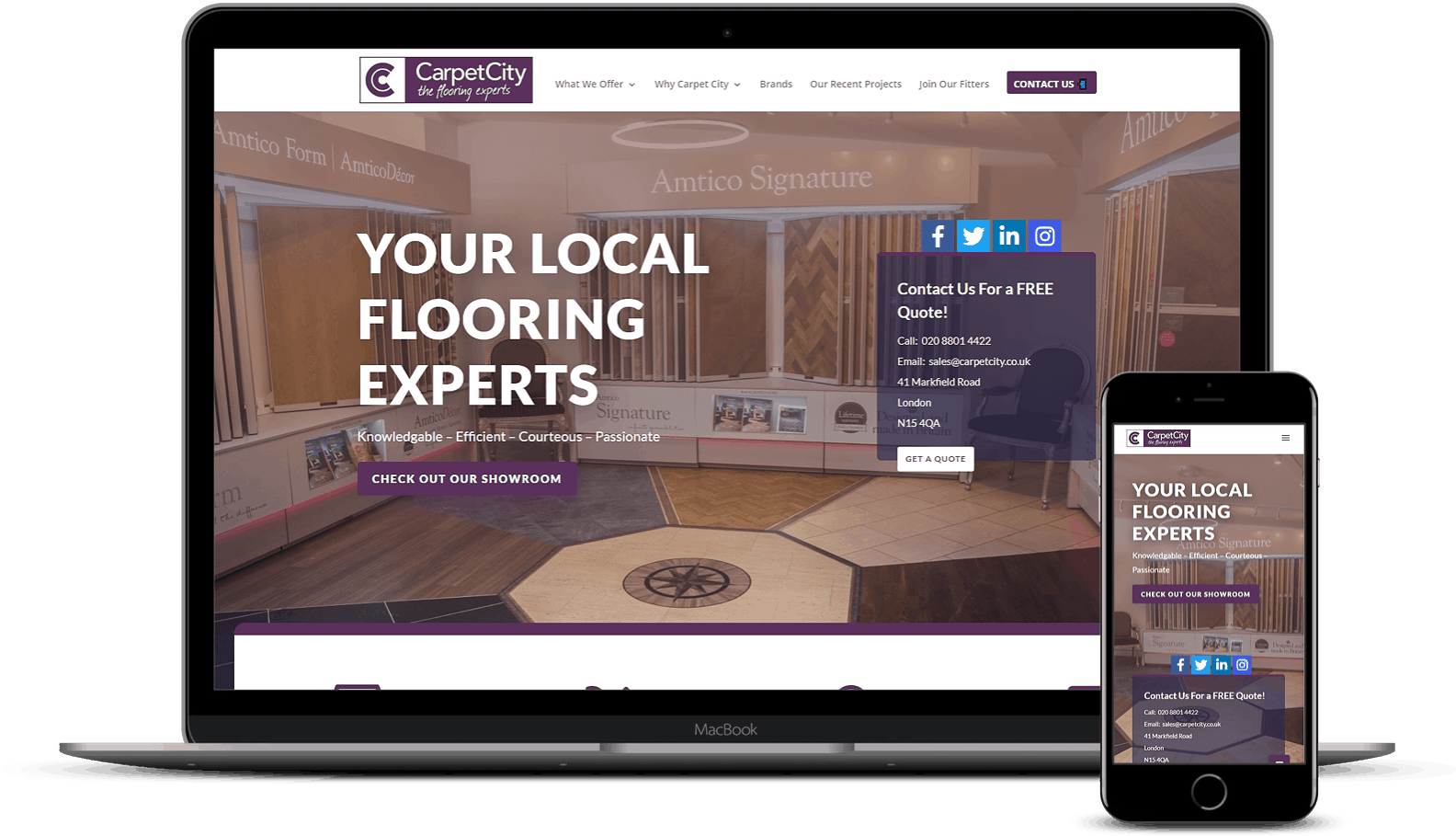
Most website platforms or CMS platforms will support mobile-responsive design by default.
But to fully optimise for mobile, you’ll want to check all the content manually and make further adjustments where necessary.
This will help you ensure a great experience for mobile users leading to significantly higher conversions!
Tip 13: Use high-quality images as much as possible!
There’s nothing worse than having to scroll through a website FULL of text.
Break up your content with the use of colorful-high quality images or icons.
Try to use images that take your customers on a journey and show them their desired state/goal.
Images are especially important for e-commerce brands as people want to know what they’re buying. Having professional, high-resolution images add a very visceral feel to your products.
This can help people imagine what it might feel like to hold or use without seeing it in person.
You’ll often see this with luxury brands, but this applies to any kind of store!
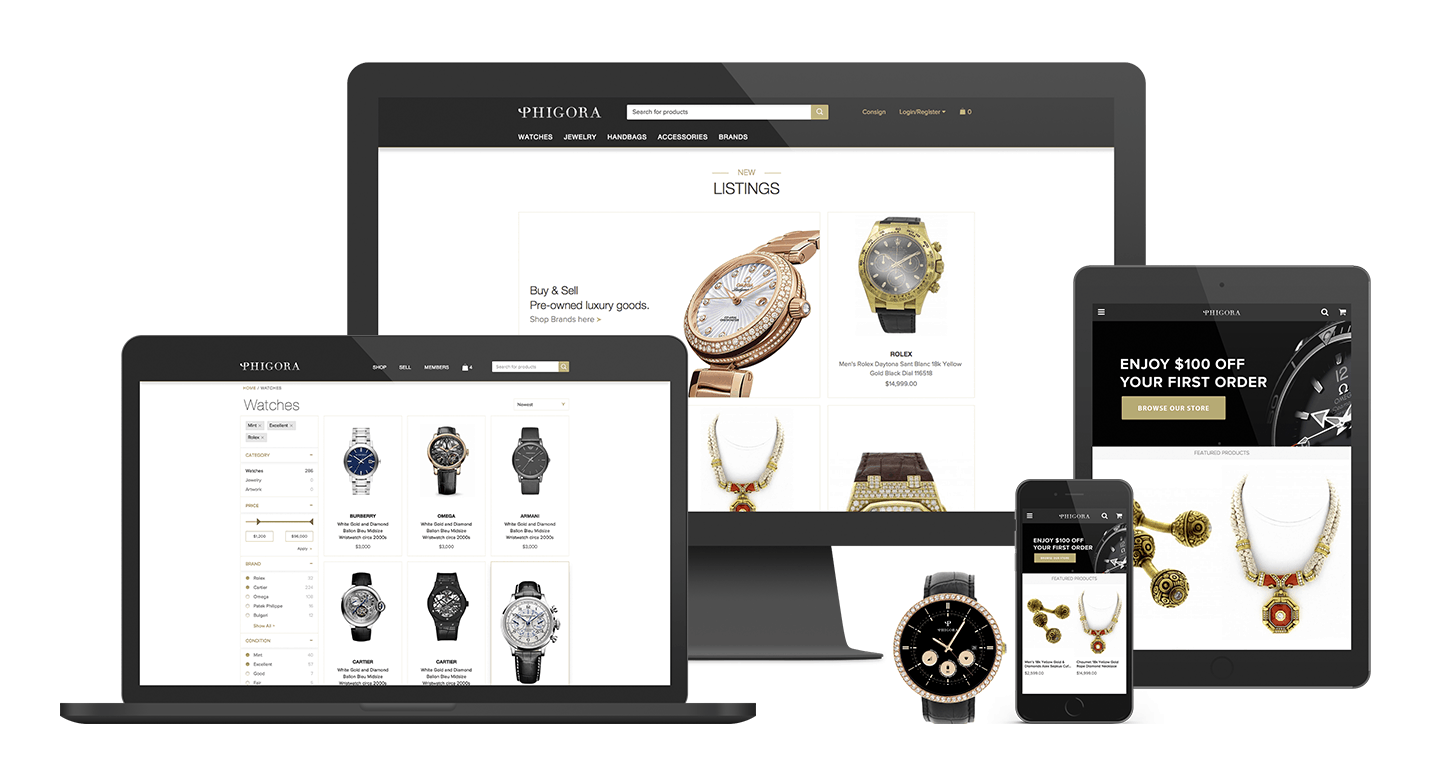
If you’re using images to promote your product or service, we’d highly recommend using your own images wherever possible. But if not, try to avoid taking images straight from Google as these often contain watermarks or copyright.
Instead use a royalty-free site like Pexels.
Tip 14: Use a live-chat or chatbot
Thanks to the likes of Amazon & Uber, we live in a world of NOW. If you’re not pro-active with your customers, they will go elsewhere.
The scary part is 90% of all website visitors will click off a website without taking any further action.
Having a live-chat that automatically engages your visitors is a great way to reduce that figure and some of our customers have seen enquiries up by over 300% as a result!!
Conversation Marketing platform Drift actually allows you to create intelligent chatbots. You can even create custom greetings for visitors depending on what page they’re on.
Here’s an example when visiting their Account Based Marketing (ABM) page.
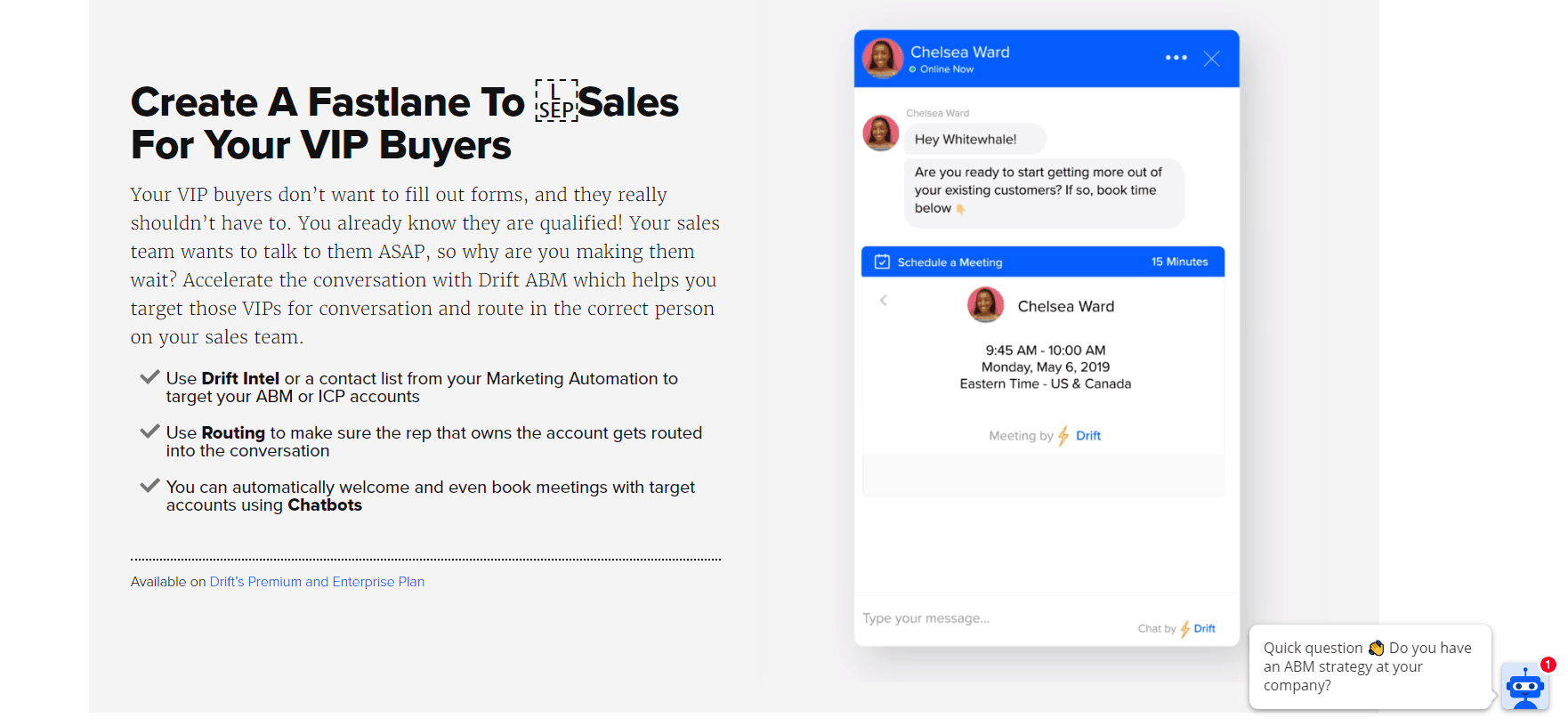
And again here on their pricing page:
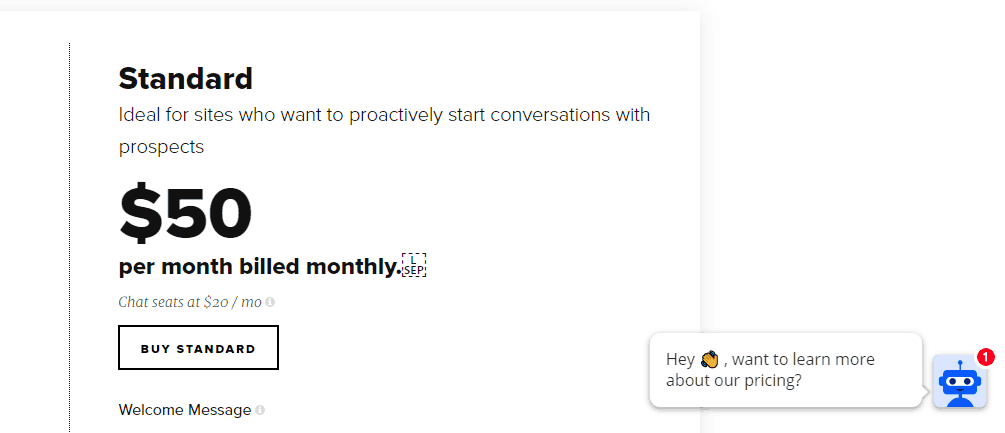
Drift also has a great FREE options that can be used on any website so it’s a great place to get started!
Tip 15: Exit intent popups
On average, over 90% of visitors will leave a website without taking any action!
That’s a HUGE amount of potential business to lose!
And whilst, granted not everyone is going to buy from you. It’s possible to capture a good chunk of those through the use of an exit-intent popup.
These are effectively popups that display when a visitor hovers outside of the viewport to click off your website.
The idea is to make one last offer in exchange for the visitors email address.
This could be a free guide relevant to your audiences pain points, or in the case of an e-commerce store, it might be a discount voucher. You’ll see this as a common trait in some of fastest growing stores and how they increase their e-commerce conversions.
Here’s a couple of great examples:
Tip 16: Consider using a dedicated landing page
Your website is typically going to be the central hub for your business.
It may have some information on your product and services, an about page and maybe even a blog.
But as we talked about earlier, the more options you give people, the less likely they are to take any action.
For this reason, if you’re running paid advertising and want users to take a specific action; it can be a good idea to use a dedicated landing page or squeeze page.
This will allow you to keep the page hyper-focused on the action you want users to take, whether that be:
- Get a free trial
- Book a discovery call
- Buy your product
- Sign up to your event
Here’s an example from Shopify for people to get started with a free trial:
We really hope you found a tonne of value from this guide and that you’ll start implementing as many of these ideas as possible!
We’ve seen time and time again with our clients that even implementing one or two of these changes can really take your results to another level!
Want To Skyrocket Your Conversions?
Book your FREE digital review today and we’ll show you how you can sure your site converts and turn more of your visitors into sales
- Highly-Effective DTC Marketing Strategies & Examples - February 28, 2024
- How To Set Paid Media Marketing Budget - October 16, 2023
- The Ultimate Guide To A/B Testing - September 23, 2023
